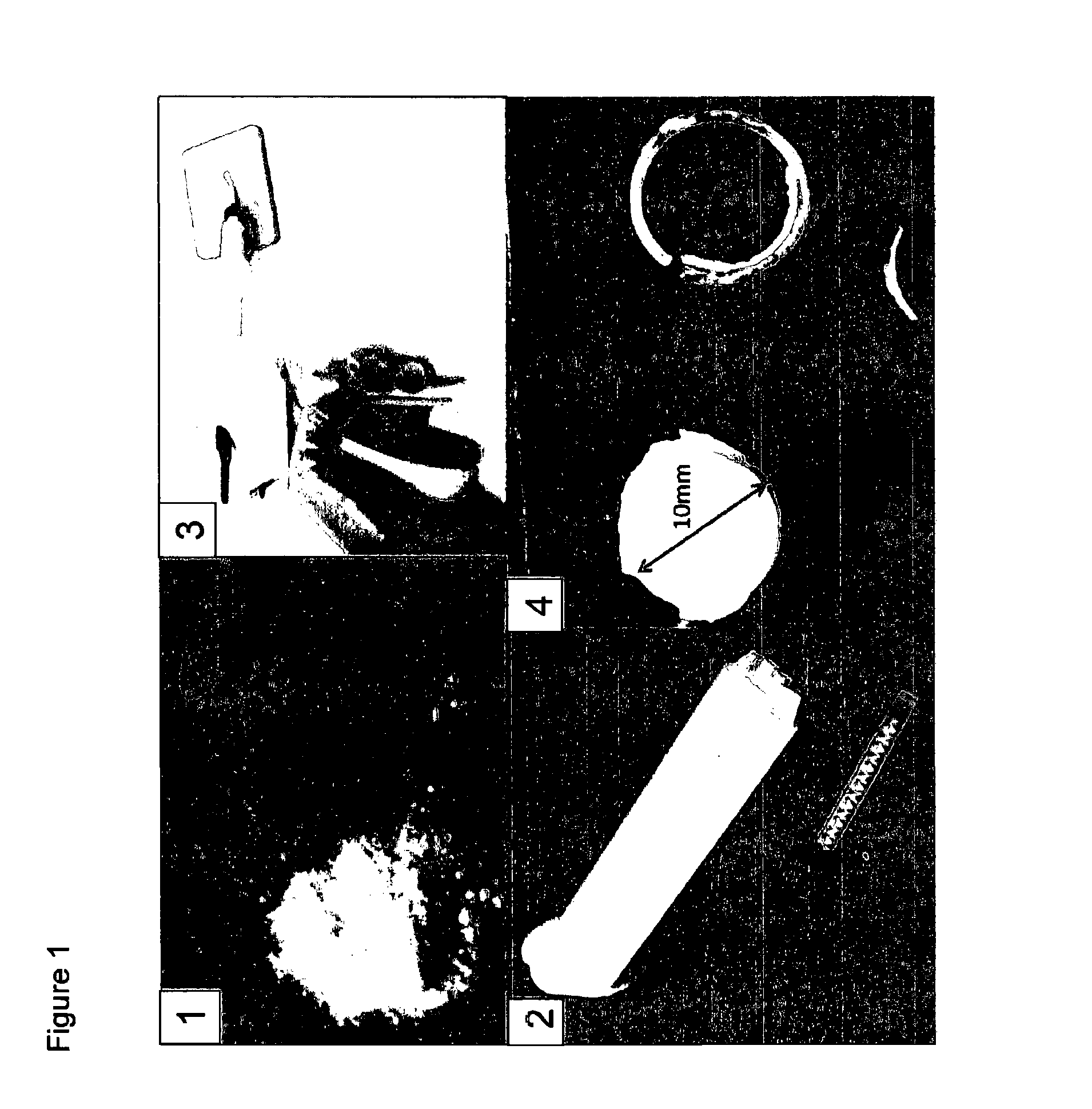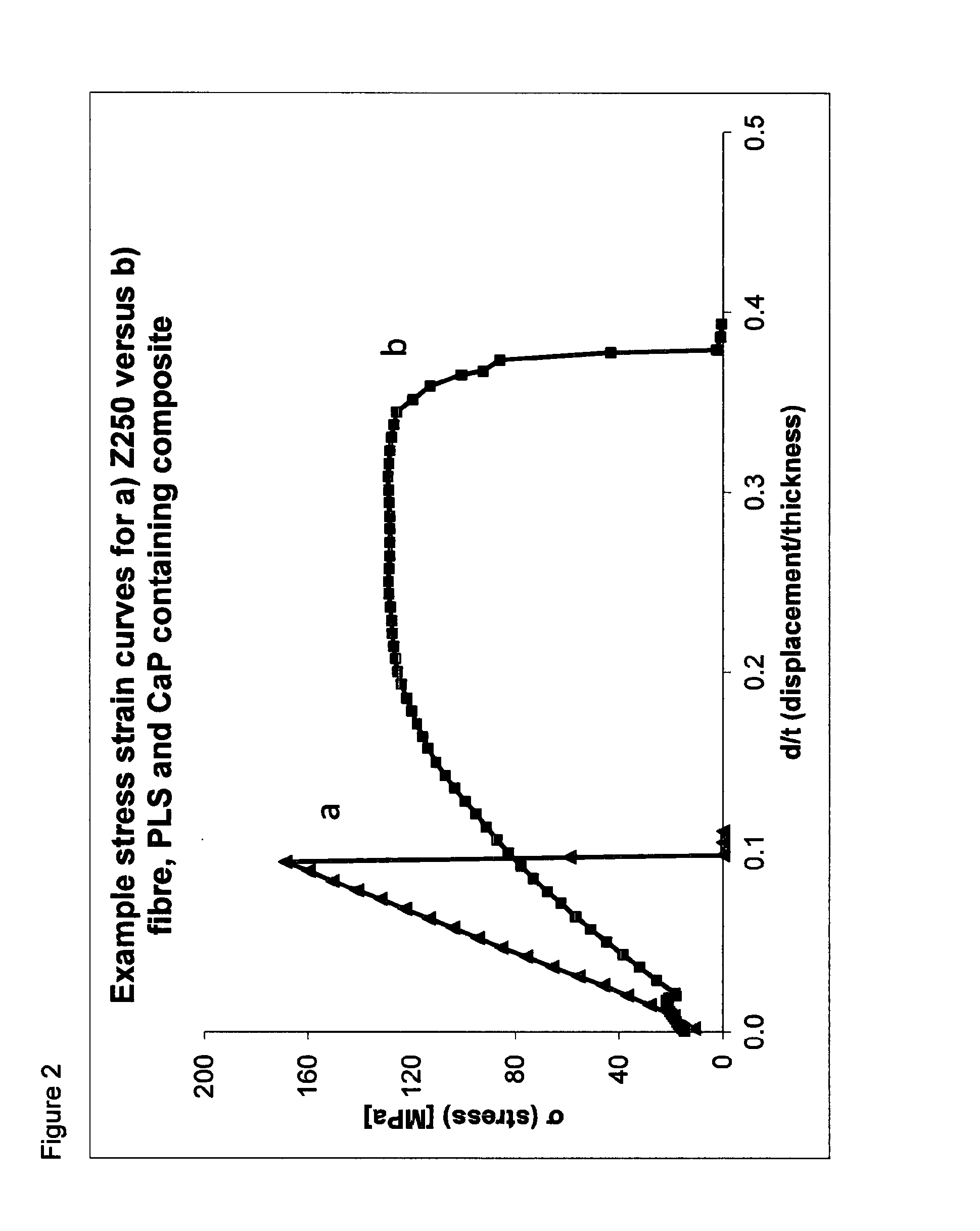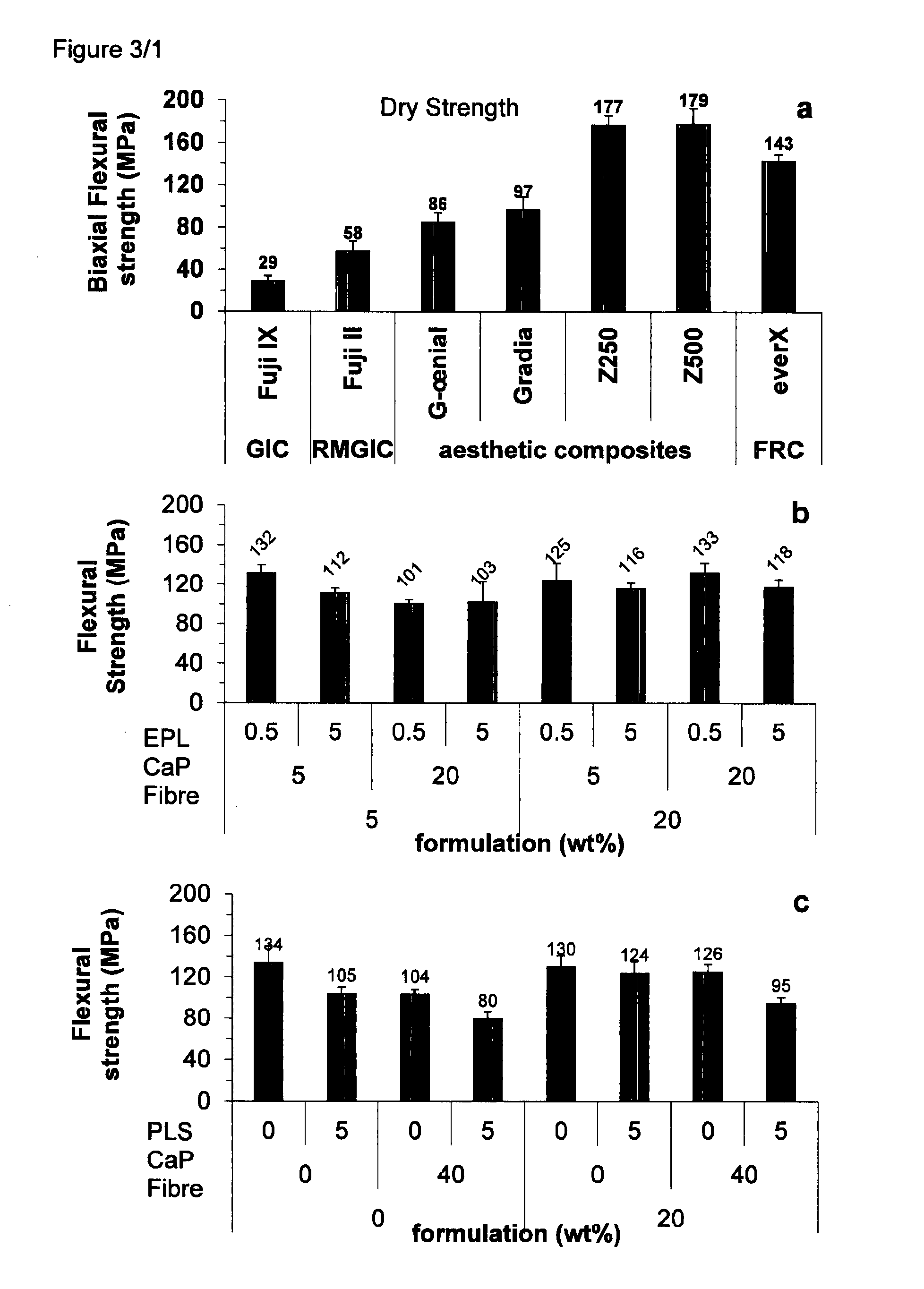Formulations and materials with cationic polymers
a technology of cationic polymers and polymers, applied in the field of fluid formulations and materials, can solve the problems of unpolymerised compound release, methacrylate-based composites and cements, and a number of disadvantages,
- Summary
- Abstract
- Description
- Claims
- Application Information
AI Technical Summary
Benefits of technology
Problems solved by technology
Method used
Image
Examples
example 1
Light Cure Composites for Tooth Restoration
Fracture Behaviour
[0364]All commercial materials tested exhibited brittle fracture (see for example Z250 in FIG. 2a). The only exception was a fibre reinforced composite (FRC) which could maintain some load after a yield point. Conversely, the experimental composites with reactive CaP fillers, fibres and PLS could all maintain load at high levels of central displacement (FIG. 2b).
Strength, Modulus and Toughness
[0365]As shown in FIG. 3a, the biaxial flexural strengths of commercial composites ranged between 86 and 180 MPa, and the modulus between 2.6 and 4.8 MPa. Strength was 3-4% of modulus. Area under curves was 12 MPa or less, except for the FRC with an area of 21 MPa. Experimental formulations containing TEGDMA diluent (FIG. 3b) or PPGDMA diluent (FIG. 3c) had similar strengths and moduli but with the addition of fibres CaP and PLS (EPL=ε-polylysine) could be much tougher even than the commercial FRC (see FIGS. 2b, 3b and 3c). In FIG. 3 ...
example 2
Water Sorption and Calcium Phosphate Precipitation
[0368]Composite discs were prepared using UDMA:TEGDMA diluent 3:1 mass ratio. This was combined with a barium aluminosilicate glass (DMG) mixed with polylysine (2 or 10 wt %), 10 wt % TCP or the strontium equivalent, 10 wt % MCPM and 10 wt % CHX. The filler comprised 80 wt % of the total formulation. All formulation combinations increased in mass in both water and simulated body fluid (SBF). Mass gain due to calcium phosphate precipitation was estimated from the percentage mass gain in SBF minus the percentage material loss in water. Most mass change was in the first 24 hours. Upon drying at 2 weeks the samples containing 2 wt % PLS in the filler were found to have absorbed 4-5% water (FIG. 5). From the chemical equation for brushite formation (1) given above, 1 g of MCPM requires 0.5 g of water for full reaction. 10 wt % MCPM in the filler (i.e. powder phase) is equivalent to 8% of the total composite. 4% water sorption is therefore...
example 4
Chemical Cured Composites for Bone Repair
Testing of Commercial Products
[0373]FTIR was used to determine the monomer conversion time for a number of commercial cements and composites. As shown in Table 2, commercial PMMA cements Palacos and Simplex P and bone composites Cortoss and Comp06 exhibited a delay time tinh before reaction, which provides the clinician with “working time”. The time for half maximum reaction varied between 232 and 416 s. Final methacrylate conversion was over 50% for the composite cements as required for dimethacrylates. With the PMMA cements, conversion was less than 100% indicating significant unreacted MMA which can reduce cell compatibility.
[0374]Biaxial flexural strength of dry samples varied between 115 and 145 MPa. Modulus of the PMMA cements was advantageously lower than for the composites (Table 2). The PMMA cements also exhibited some plastic deformation after a yield point whereas the commercial composites exhibited brittle fracture and low toughne...
PUM
| Property | Measurement | Unit |
|---|---|---|
| diameter | aaaaa | aaaaa |
| diameter | aaaaa | aaaaa |
| pH | aaaaa | aaaaa |
Abstract
Description
Claims
Application Information
 Login to View More
Login to View More - R&D
- Intellectual Property
- Life Sciences
- Materials
- Tech Scout
- Unparalleled Data Quality
- Higher Quality Content
- 60% Fewer Hallucinations
Browse by: Latest US Patents, China's latest patents, Technical Efficacy Thesaurus, Application Domain, Technology Topic, Popular Technical Reports.
© 2025 PatSnap. All rights reserved.Legal|Privacy policy|Modern Slavery Act Transparency Statement|Sitemap|About US| Contact US: help@patsnap.com



